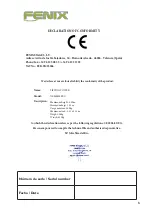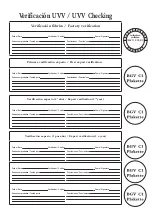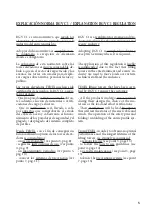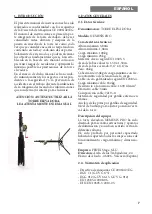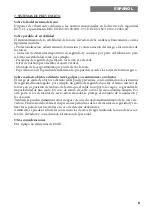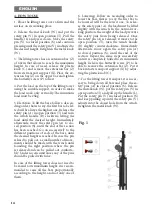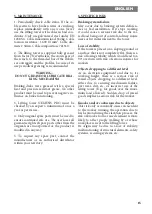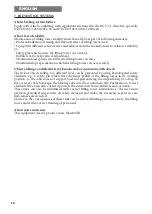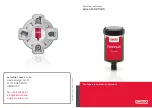
16
16
ENGLISH
7. PREVENTION SYSTEMS
About braking system failure
Equip with winch complying with regulations metioned in the BGV C1 directive, specially
DIN EN ISO 12100:2011-03 and DIN EN ISO 12100-1:2004-04.
About loss of stability
Maintenance of lifting tower stability must basically be as per the following measures:
• Professionalization, training and risk awareness of lifting tower users.
• Equip with different safety devices and advices from the manufacturer to reinforce stability,
as:
- Safety pins which secure the lifting tower once raised.
- Bubble level to help vertical adjustment.
- Maximum load specification that the lifting tower can raise.
- Maximum slope specification which the lifting tower can access safely.
Objects falling to a different level, knocks and/or contusions with objects
The risk of objects falling to a different level can be prevented by using homologated safety
elements, e.g., a safety pin which fixes the inner profile of the lifting tower in its working
position, so the cable does not support load and guaranteeing the impossibility of a drop. In
the event of cable breakage, the braking system will act automatically. Furthermore, if steel
elements have been zinc coated it protects the entire unit from oxidation and corrosion.
These risks can also be minimised with correct lifting tower maintenance. The user must
perform periodical inspections on safety elements and make the necessary repairs in case
deficiencies are detected.
Moreover, the consequences of these risks can be reduced limiting an access area to the lifting
tower and with a correct training of personnel.
About noise emissions
This equipment doesn’t produce more than 80 dB.
Summary of Contents for NEMESIS PRO
Page 17: ...17...
Page 18: ...18...
Page 19: ...19...
Page 20: ...20 NOTAS NOTES LIFTING TOWERS...
Page 21: ...21 NOTAS NOTES LIFTING TOWERS...
Page 22: ...22 NOTAS NOTES LIFTING TOWERS...
Page 23: ...23 NOTAS NOTES LIFTING TOWERS...


